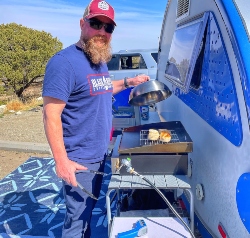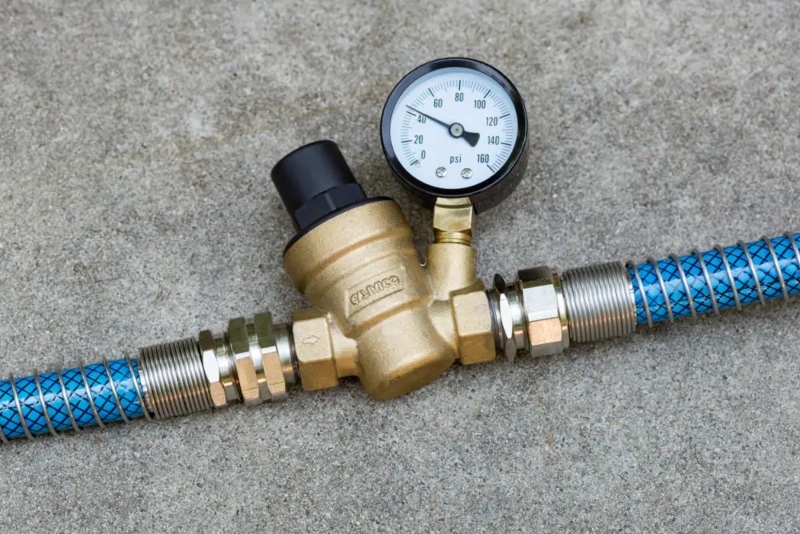Thanks for your support! If you make a purchase using our links in this article, we may make a commission. And, as an Amazon Associate, I earn from qualifying purchases. See the full disclosure here.
Have you ever seen those brass fittings with a dial gauge on your campsite neighbor’s water hookup before? It’s called an RV water pressure regulator.
Water is one of those essential items that you just can’t travel without. Your RV allows you to enjoy some of the comforts of home like running water and flushing toilets. Many new RV owners think that connecting their rig to domestic water service at a campground without an RV water pressure regulator is no big deal.
However, there is a hidden danger to municipal water tie-ins: water pressure.
Municipal city water pressure can vary greatly from campground to campground. Sometimes you’ll find water pressure that is too low, sometimes it can be very high.
Both scenarios are problematic, but both can also be easily managed with an RV water pressure regulator.
If you are a new RV owner, or haven’t considered one before, we break down what you need to know about RV water pressure. Also, you’ll learn why you need an RV water pressure regulator for your RV.
What is an RV Water Pressure Regulator?
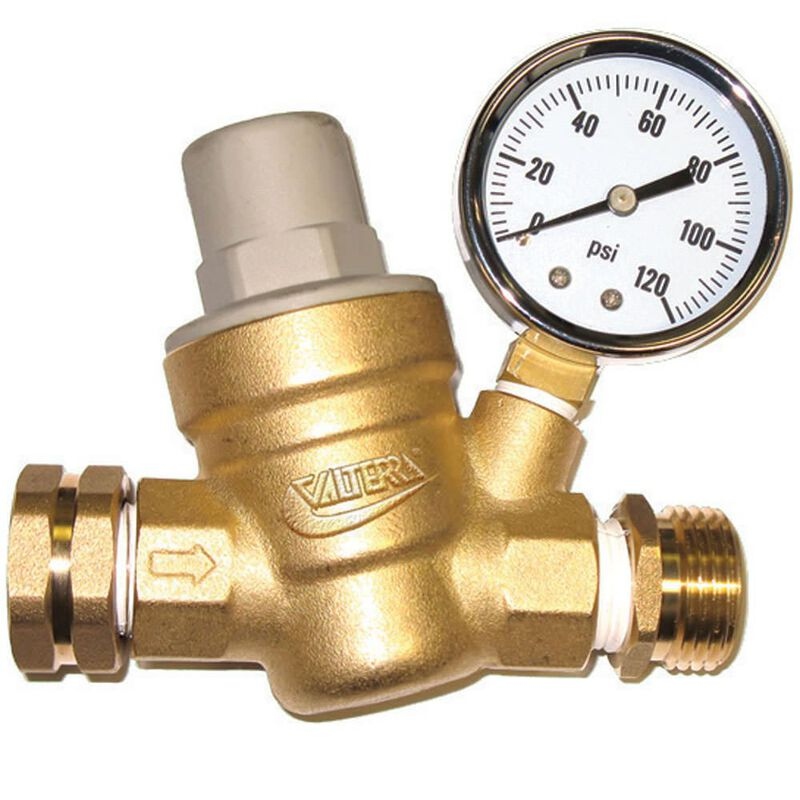
From the name, an RV water pressure regulator seems like it should be a complicated piece of equipment. Most RV owners are surprised to learn that a water pressure regulator is actually a simple piece of equipment that’s inexpensive.
In simple terms, an RV water pressure regulator is an attachment placed between your RV and the municipal water system. It reduces (or increases) the water pressure that’s delivered to your RV.
The water pressure regulator uses a spring-operated valve that reduces the pressure coming in from the water supply by limiting the amount of water that passes through the regulator.
Where Does an RV Pressure Regulator Go?
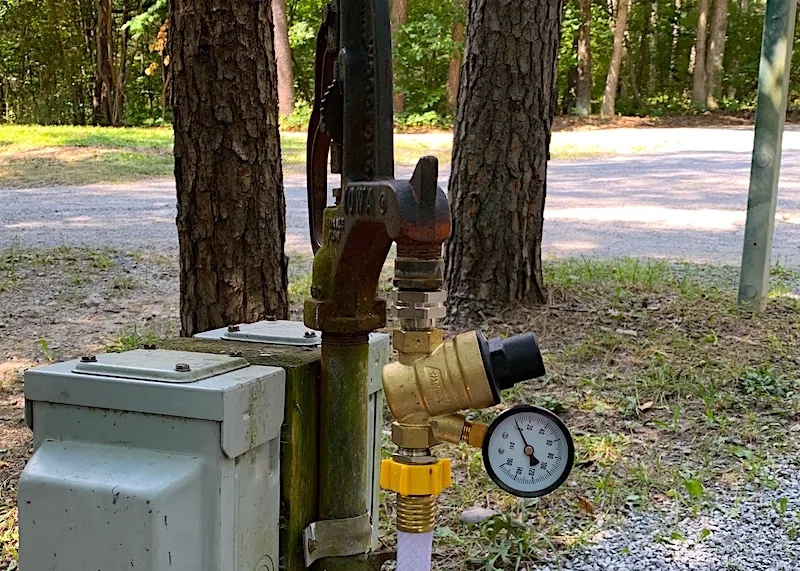
There are a couple of ways to install a water pressure regulator for your RV. Which you decide to use may depend on your RV or the campground water system you’re using.
A best practice for most RVers is to install your RV water pressure regulator between the municipal water spigot and the tie-in to your RV. Some people prefer to install the pressure regulator right at their RV’s freshwater inlet. However, this can be problematic if your pressure regulator fails.
In our experience, the best place to put your RV water pressure regulator is directly after the spigot from the municipal water supply. You’ll attach the regulator to the spigot, and the hose to your RV will attach to the outlet of the pressure regulator.
What Happens When Water Pressure is Too High in RV?
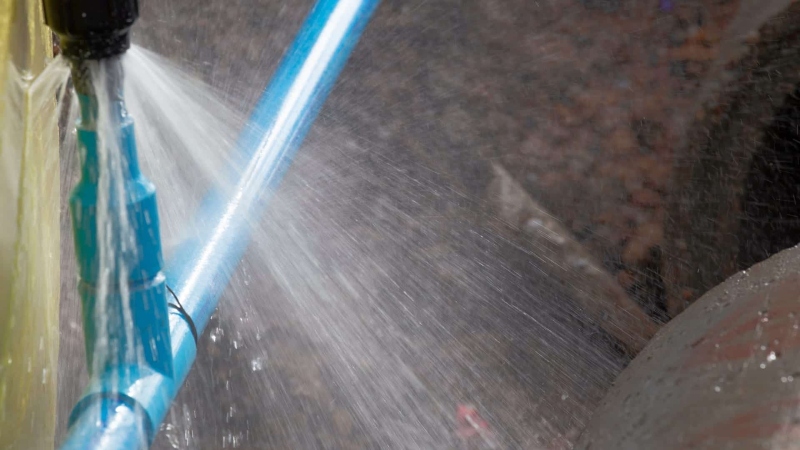
It may not seem like a big deal, but too much water pressure in your RV can create huge problems, and no one wants to be standing in a lake to cook dinner.
Municipal water pressures can range wildly from around 30 psi to around 200 psi. All RV water systems are designed to handle much lower water pressures. So when you connect directly to a municipal water system that’s pushing 150 psi, you risk blowing out your RV’s water lines.
This might not happen the first time you connect to high water pressure. Over time, connecting to high water pressure repeatedly without a regulator can weaken joints in your RV’s plumbing, causing leaks.
These leaks may be hidden behind cabinets or under the floor, so you may not see them until it’s too late. Over time, however, these leaks can lead to costly damage to your RV. Unfortunately, this damage could have easily been avoided.
RV water pressure regulators also help when campgrounds have weak water pressure. The device can create additional pressure, so water flows properly.
What’s the Maximum Safe Water Pressure in an RV?
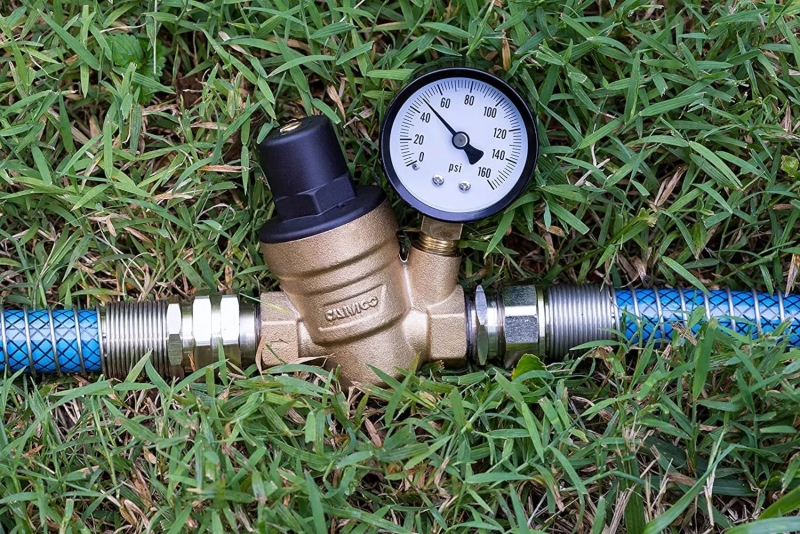
RV PEX plumbing lines are able to handle a maximum water pressure of 60 psi (pounds per square inch). Recently, we encountered a Class A motorcoach that was able to handle 90 psi of water pressure, which is comparable to the water pressure you enjoy at home.
The best advice we can offer regarding the maximum water pressure that your RV can accommodate is to consult with your owner’s manual or your local RV dealer. These resources will give you the proper water pressures for your particular RV or travel trailer.
What’s the Best Water Pressure for MY RV?

The water pressure that’s best for your particular RV will be available in your owner’s manual. In some cases on the municipal water inlet on the outside of your RV.
If you can’t find the ideal water pressure information for your particular RV, the best water pressure for an RV is between 40-50 psi. This pressure window will provide you good flow for your flush toilets, sink, and shower. It also is safe enough for the plumbing systems in your RV.
What are the Different Types of Water Pressure Regulators for an RV?
If you’re shopping for a water pressure regulator for your RV, you’ll notice that there are only two basic options: adjustable and non-adjustable.
1. Non-Adjustable RV Water Pressure Regulators
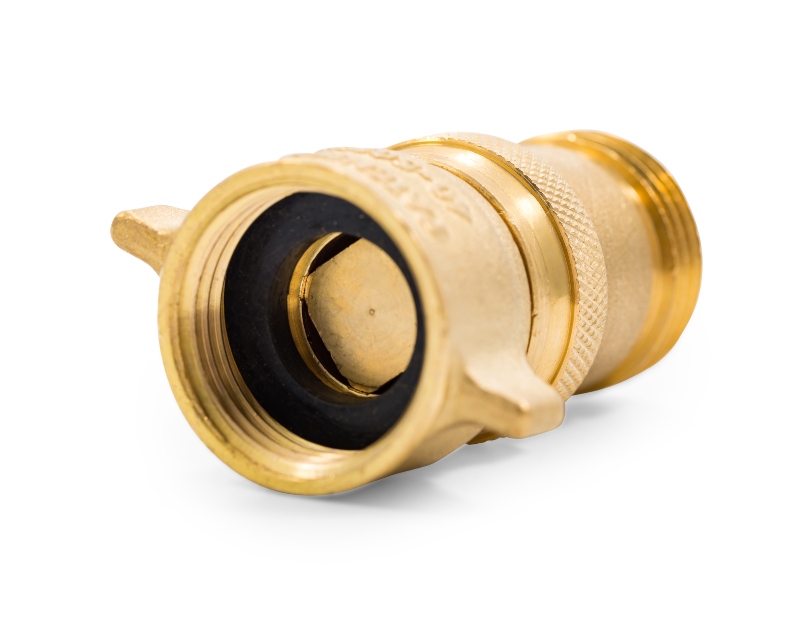
Non-adjustable water pressure regulators are designed to deliver a set amount of pressure through the valve to your RV. These regulators are simple to install and use. Many non-adjustable water pressure regulators are made from plastic or brass and are pretty inexpensive, You can find these RV essential accessories under $10.
2. Adjustable RV Water Pressure Regulators
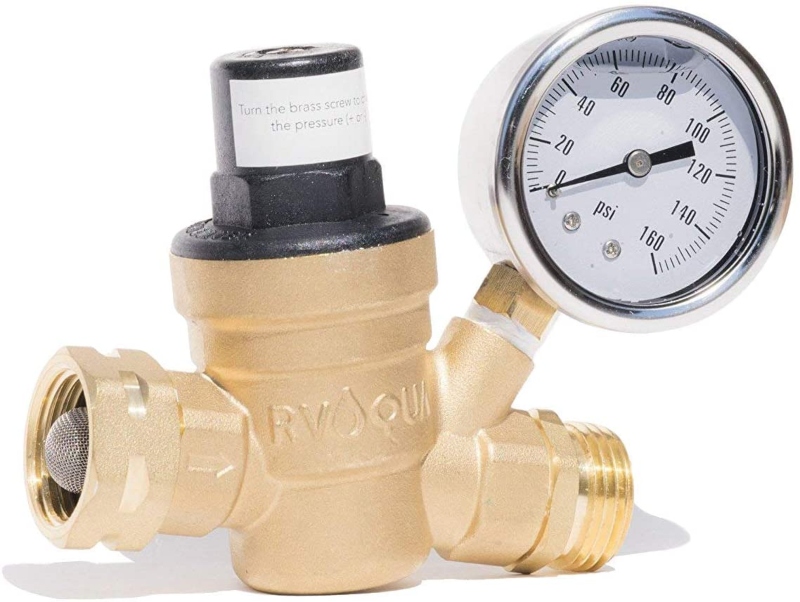
Adjustable water pressure regulators are more expensive, but they do allow you to set the pressure coming from the municipal supply. This type of RV water pressure regulator could be ideal for your RV if you travel around more often.
Adjustable water pressure regulators are usually made of brass and have a pressure gauge to monitor the flow pressure. While this option is more expensive than a non-adjustable regulator, most are less than $40.
How Do You Adjust a Water Pressure Regulator?
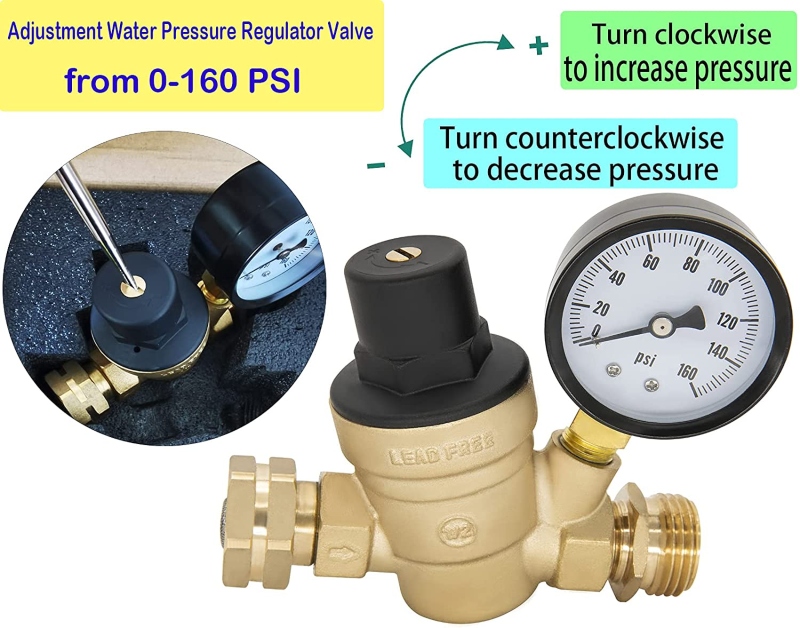
If you’ve purchased a non-adjustable pressure regulator, you can’t change the amount of pressure that’s being delivered to your RV. However, if you have an adjustable water pressure regulator, the process of adjusting the water pressure is really simple.
To adjust the pressure on your RV water pressure regulator, you’ll first attach the regulator to the municipal water supply. Then add the RV drinking hose to the regulator and your RV.
Before turning on the water, make sure that the adjustment knob is completely closed by turning it all the way to the right. Some of these devices require a flathead screwdriver, while others have a hand-turnable component.
Next, turn on the water at the spigot. Slowly turn the adjustment knob. Doing this will open the valve inside of the regulator allowing water to pass through. Turn the knob until the gauge reads the correct water pressure for your RV.
Finally, you’ll want to go back and check the pressure reading on the gauge after your RV’s water system has been charged. If the pressure reading has increased or decreased, turn the knob to adjust the pressure to the correct value.
Can RV Water Pressure Regulators Go Bad?
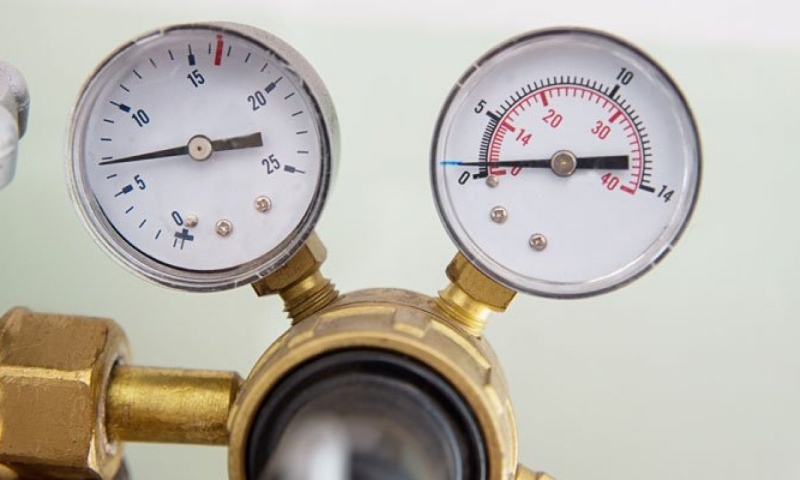
RV water pressure regulators aren’t invincible. Over time, these small but very handy RV accessories can go bad.
The most frequent reason that your water pressure regulator will fail is that the spring inside, which adjusts the water pressure, loses its tension or breaks.
When this happens, the regulator will either close down completely or won’t reduce the pressure from the municipal supply.
We carry an extra RV water pressure regulator, just in case the one we’re using fails. Because they’re relatively inexpensive, this is an easy investment and a nice security blanket for those “just in case” situations.
How Can I Increase the Water Pressure in My RV?
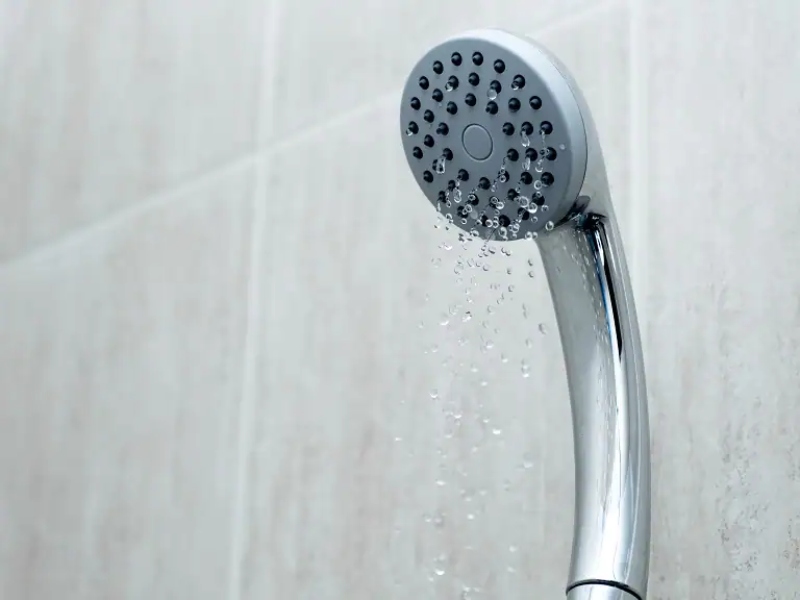
If you’re noticing that your RV water pressure is lower than you expect, there are a few things that you should check.
First, make sure that the hose between the municipal supply and your RV isn’t kinked. This is one of the most common causes of low water pressure in an RV. Also, check the pressure gauge on your RV water pressure regulator. It may not be properly adjusted.
If that doesn’t solve the problem, check the inline filter for your water system. If the filter is plugged it may not be allowing water to easily pass through, reducing your RVs water pressure.
If it’s not the hose or water filter, your RV water pressure regulator can help. non-adjustable RV water pressure regulators can create a higher pressure for slightly lower municipal water connections. Adjustable versions can be adapted in many situations.
If all else fails, you can always fill your fresh water tank, prime the water pump, and refill the tank as needed. Remember to use your inline or canister water filter when filling up your fresh tank to keep it clean. If the water smells or tastes funny, perform a fresh water tank sanitation cycle.
Which are Better: Plastic or Brass Pressure Regulators?
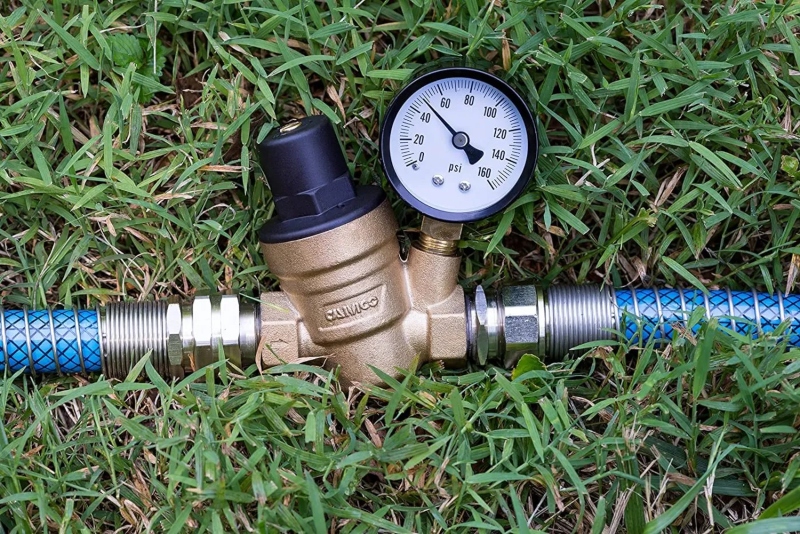
There are pros and cons to both plastic and brass water pressure regulators. Personal preference plays into which you choose, but from our experience, brass water pressure regulators are the better option.
Plastic water pressure regulators are inexpensive, lightweight, compact, and simple to use. Most plastic water pressure regulators are non-adjustable, so there’s no extra work when setting up your RV.
You attach the regulator, turn on the water and you’re good to go. However plastic water pressure regulators don’t last as long as brass regulators. You’ll find that you’re replacing them more frequently.
Brass water pressure regulators are a bit more expensive, heavier, and bulkier than their plastic counterparts.
However, brass regulators are more durable, are often adjustable (there are non-adjustable brass regulators as well), and they tend to last longer than RV plastic water pressure regulators. While you’ll spend more initially on a brass water pressure regulator, you’ll find that they’ll save you money in the long run since you won’t have to replace them often.
Does the Size of My Drinking Hose Affect RV Water Pressure?
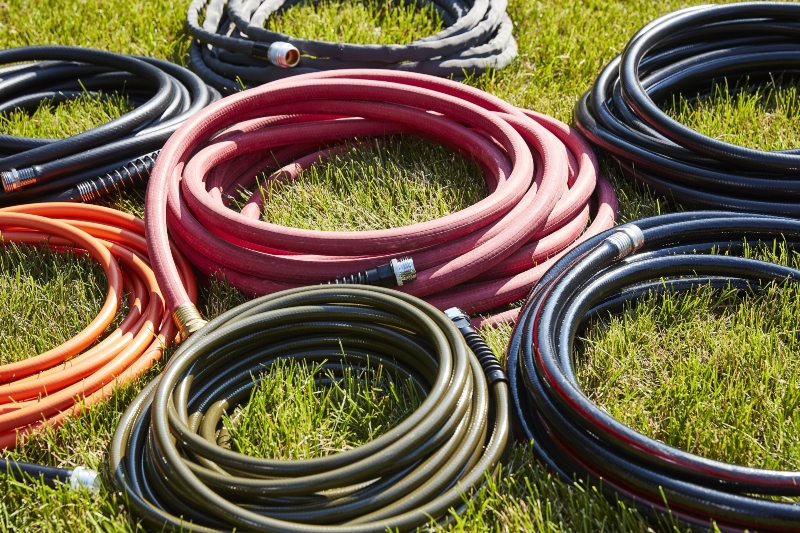
Most of us use a 5/8 inch hose on our RV. This is pretty standard, however, there are 1/2 inch options out there. This variation in hose diameter often inspires the question, does hose size affect RV water pressure?
The simple answer to this question is, no, hose diameter doesn’t significantly affect the water pressure inside your RV. While it seems logical that a smaller diameter hose will increase water pressure, you really won’t notice a significant change in pressure between a ½-inch and 5/8-inch hose.
The other thing to remember is that even if you use a smaller diameter water supply hose you’ll still want to use an RV water pressure regulator, which will make a greater impact on water pressure than hose diameter.
What are the Best RV Water Pressure Regulators?
If you’re shopping for an RV water pressure regulator, you have likely realized that there are tons of options. When it comes to the best water pressure regulators, we have a few that we prefer to use on our RV.
1. Camco 40064 Easy Read Brass Pressure Regulator
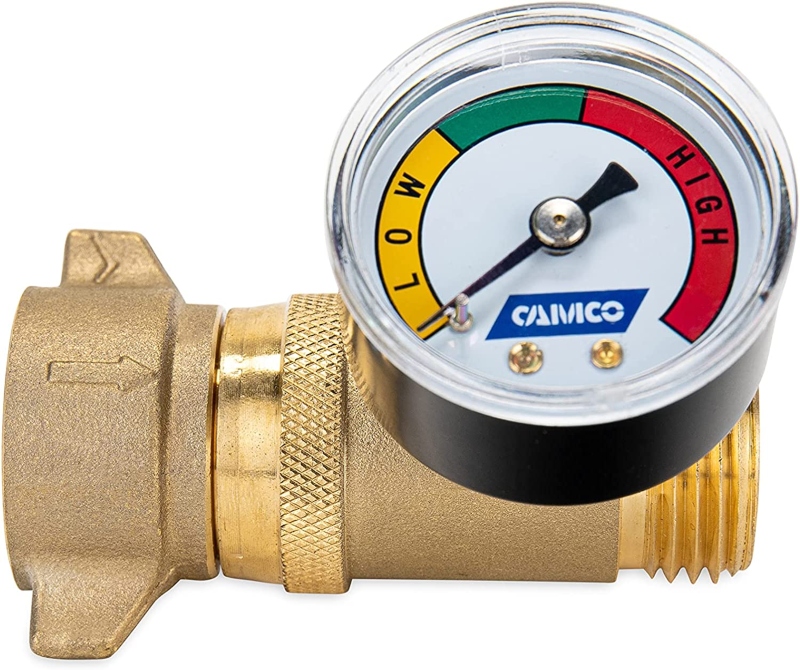
The Camco Easy Read Brass Pressure Regulator is an excellent choice for a brass, non-adjustable RV water pressure regulator. The easy-to-read gauge allows you to quickly determine if the water pressure going to your RV is in the right range. The factory setting for this regulator is 40-50 psi.
2. Renator M11-0660R Adjustable Brass Pressure Regulator
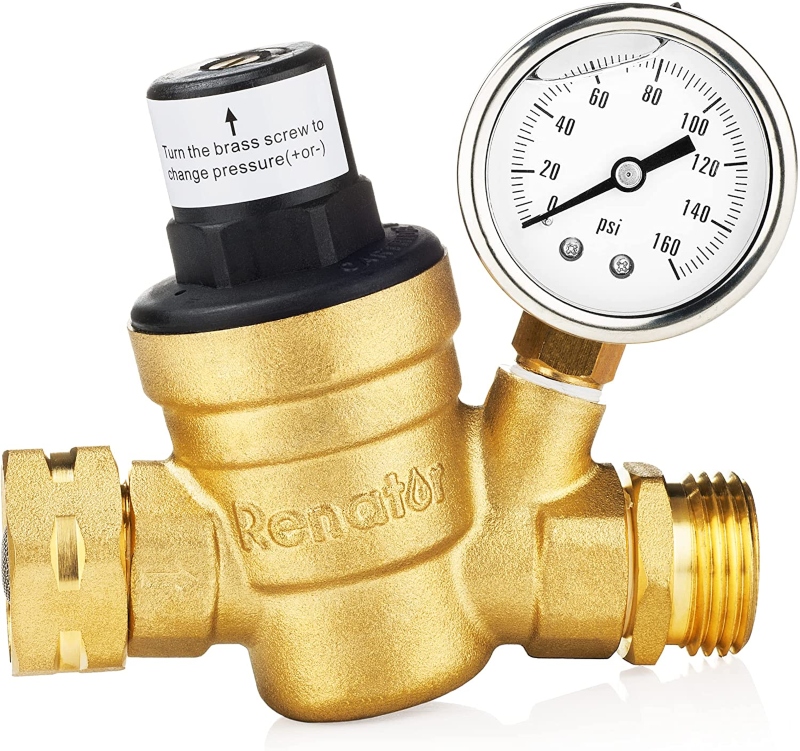
The Renator Adjustable Brass Pressure Regulator is easy to use. The flathead screw adjustment piece gives you peace of mind that no one will accidentally twist a knob and alter your pressure setting. This brass pressure regulator is also one of the more affordable options out there.
3. RV Guard RV Water Pressure Regulator Valve
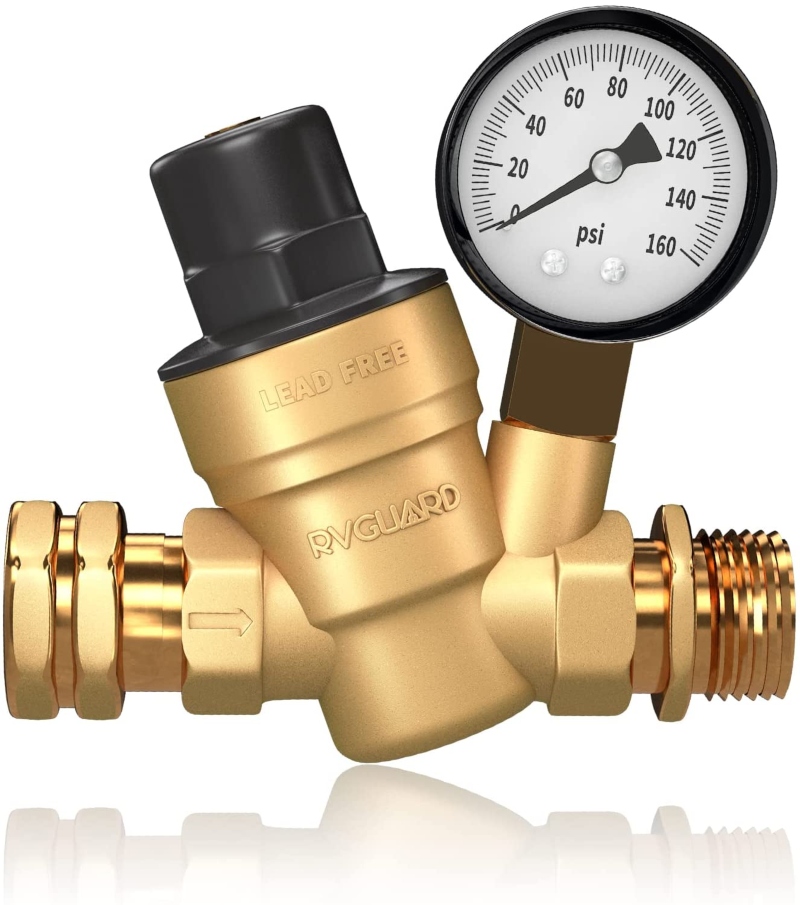
Each RVGuard Water Pressure Regulator Valve is tested to make sure it doesn’t contain lead. It leaves the factory set at 45 psi, but you can adjust it up to 160 psi. The device is die-cast, so the brass is one-piece, giving it superior strength.
4. PANGOLIN Water Pressure Regulator Valve
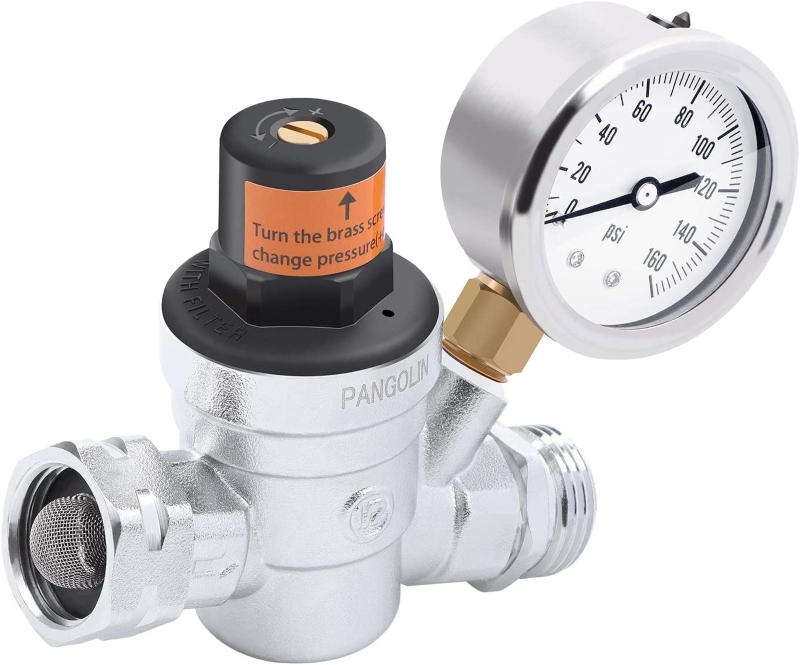
Although it has an aluminum-like look, the PANGOLIN Water Pressure Regulator is a double die-cast brass device that’s plate. The plating prevents bacterial growth and the entire device is lead-free. The inlet side comes with a dual-layer screen that blocks bigger contaminants from coming through. The gauge has a silicone oil inside that keeps all of the components lubricated, so it works accurately.
Final Thoughts on RV Water Pressure Regulators
Many RV owners learn the hard way about the importance of regulating water pressure. RV plumbing systems are designed to handle lower water pressures, and the easiest way to control water pressure in your RV is to invest in a quality water pressure regulator.
RV water pressure regulators are inexpensive and easy-to-use accessories that will protect your RV plumbing from leaks, and protect your bank account from expensive, but avoidable repairs.
1. 6 Best RV Water Pressure Regulators to Prevent RV Plumbing Leaks
2. RV Hookups Explained (Water, Sewer, Electric)
3. Do Tankless RV Water Heaters Provide Endless Hot Water?
4. 15 Best Drinking Water Hoses for Your RV or Camper
5. How to Store an RV Water Filter Between Trips
6. Why Your RV Water Pump Pulsates and How to Fix It
About the Author
Jason Gass – Author and Part Time RVer
Jason Gass is a full-time freelance writer and part-time RVer whose goal is to share great stories around a campfire with good friends.
When he’s not working, he spends most of his time camping, searching for the best breweries, and road-tripping in his teardrop trailer with his wife, daughter, and two dogs.
